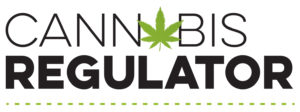An alarming report that came out of France this week should be an eye-opener for America’s legal cannabis industry.
According to a study published yesterday in the French journal Pediatrics, the number of kids who visited emergency rooms for inadvertent marijuana intoxication rose 133% between 2004 and 2014.
Intoxication can occur through ingesting cannabis products, or via smoke inhalation. Side effects vary from sleepiness to serious health risks like difficult breathing or seizures. Which is to say that, counter the misconception of some parents, the danger posed by pot to children is very real.
Unlike in America, cannabis is 100% illegal in France. Not even medicinal products are allowed. Nevertheless, the country has the highest rate of cannabis consumption in Europe, according to the study. And not nearly enough of these users have kept their marijuana out of the hands of children. Especially edibles, which can appear to kids like candy treats that they would eat every day.
Over that 11-year period, 235 French children were taken to emergency rooms for cannabis intoxication. That may seem like a small number given the large population of France, but it represents an unfortunate side effect of the greater spread of marijuana: the risk to children. Between 2004 and 2014 in France, the amount of calls to poison control centers about intoxicated children rose 312%.
The researchers behind the report point to two factors behind their findings. One is adults who do a poor job of storing marijuana somewhere safe. The other is the rise of the average THC potency in cannabis products. Researchers report that the THC concentration has increased from 9% to 20% in those 11 years. Greater potency, of course, means greater risk for children.
None of this is news for the American marijuana industry. Potency and underage consumption are two of the top issues facing the burgeoning cannabis market. Still, that a country where pot is illegal is still facing rising levels of child intoxication and drug potency should emphasize the importance in America of controlling these potential dangers.
In a different study, Dr. G. Sam Wang, a pediatric toxicologist at Children’s Hospital Colorado in Aurora, reported a startling finding. Between 2005 and 2011, in U.S. states that legalized medicinal marijuana, the number of cases of intoxicated children reported to poison control centers rose 30% more each year. No doubt that number further will rise in states that legalize recreational cannabis — if regulators do not clamp down on the causes.
States should continue to mandate childproof containers for cannabis products, where applicable. Edibles should be made in a manner that they do not mimic common snacks for children — like gummies and cotton candy. And it’s critical that states also continue to limit the serving size and potency of cannabis products.
The legal cannabis movement will not succeed without safe regulations. The future of pot in America relies on them.
It’s an unfortunate inevitability that with the rise in social acceptance and the availability of cannabis, so too will the danger increase for underage intoxication. But with proper regulations that target the problem areas, U.S. regulators can better protect the greatest number of children from accidently harming themselves through unintentional cannabis consumption.
Kyle Swartz is editor of Cannabis Regulator. Reach him at kswartz@epgmediallc.com










